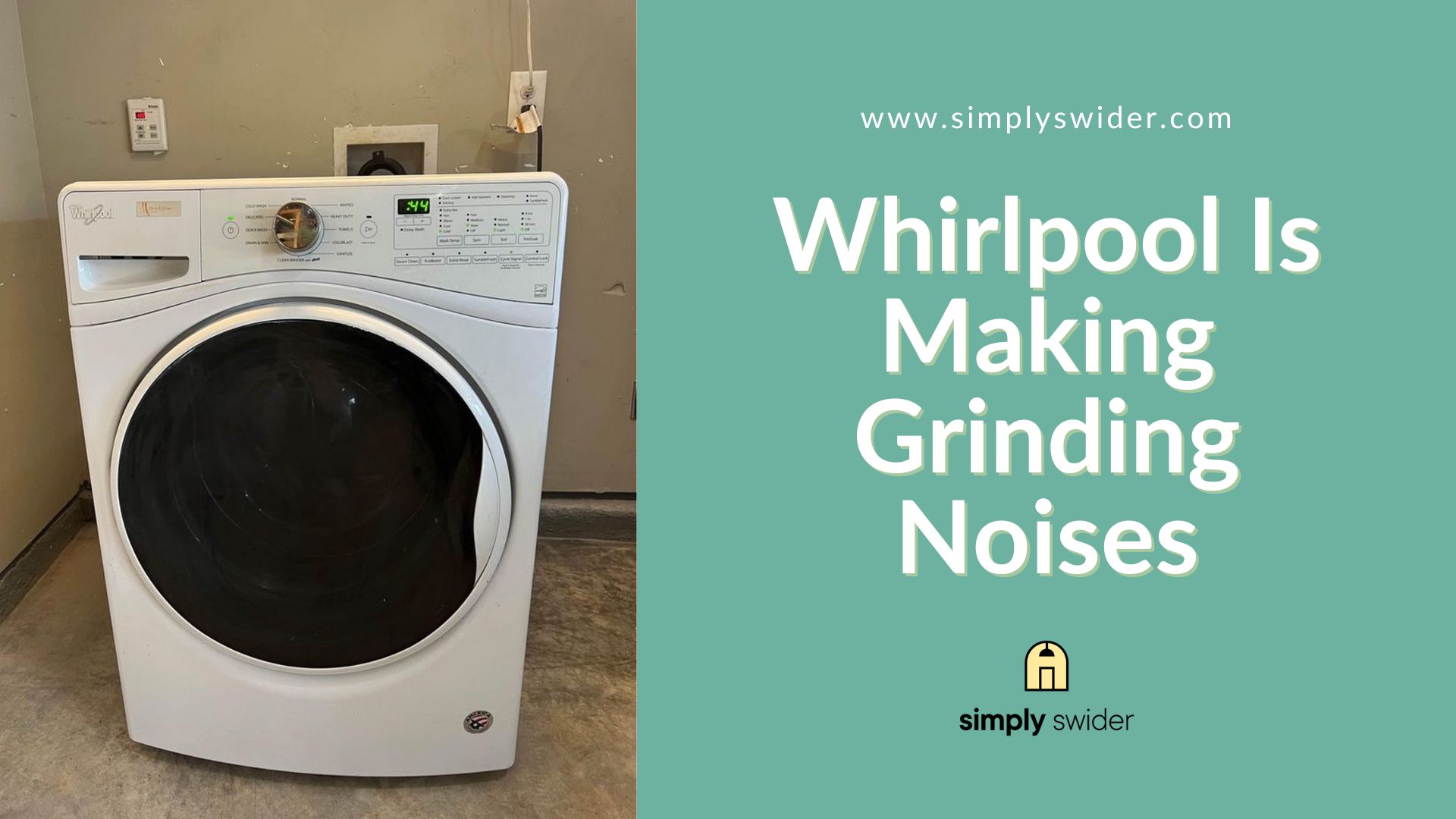We know:
Washing machines are the biggest time saver as far as laundry is concerned. They enable users to wash a lot more in less time.
How?
The clothes are agitated in a compartment filled with washing liquid and water.
Now:
While it can be helpful, a Whirlpool washer may start making grinding sounds during a wash cycle.
Sadly:
This malfunction would make washing irritating and nerve-racking, especially when the user has no idea what is causing the grinding sound.
Thankfully:
We have collected a list of possible causes, which you can explore in the guide below.
Table of Contents
Whirlpool Is Making Grinding Noises
Are you nervous every time you turn on your washing machine? The grinding noises often happen during agitation, and that can suck. Fortunately, you can check any of the following parts for faults. The parts usually responsible for the grinding noises are a damaged pulley, a broken motor coupler, or a defective tub bearing.
1. A Damaged Pulley
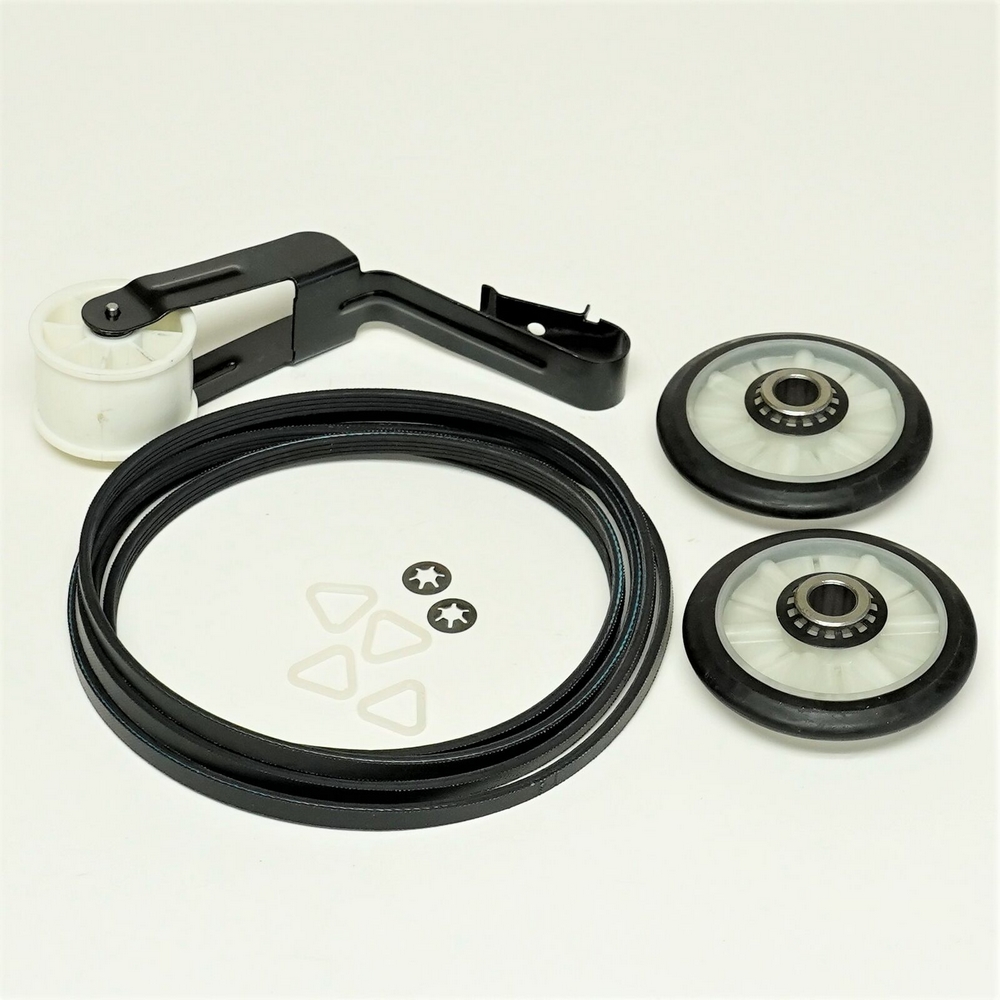
You see:
The pulley system in a Whirlpool washer connects the motor to the moving parts in the machine. The motor generates the movement, and the pulley translates that movement.
Now:
This connection is responsible for many of a Whirlpool washer’s core functions. The agitation process would not work without the motor-pulley connection.
As such:
The pulley system is an important part of a Whirlpool washer and should be treated with care. If the pulley runs into any problems, it could cause a domino effect of faults and issues.
Sadly:
One glaringly obvious defect would be a distinct grinding noise when washing. It could also cause the washer to shake violently during a spin cycle.
You see:
As inconvenient as the grinding noise is, it calls your attention to a major or minor issue with the pulley system.
So:
Check for damage in the pulley belt if you hear a grinding noise from your Whirlpool washer during agitation.
Here is how to reveal the belt for inspection:
- Step 1: Unplug your Whirlpool washer.
- Step 2: Undo the screws of the control panel that keep it lodged in place.
- Step 3: Set the control panel aside and lay your washer gently on its side.
- Step 4: Unscrew the bottom and lay it carefully on the ground.
- Step 5: Lift the spring clamps on the hose and move it out of the way.
Doing this should give you a clear view of the pump and the pulley. Look over the belt and check if it is frayed at any point.
If so:
You can order a replacement online and change it yourself. Be sure to order a high-quality replacement in the right size.
Note:
Disassembling your Whirlpool washer will void the warranty, and Whirlpool customer care will no longer be an option.
2. A Broken Motor Coupler
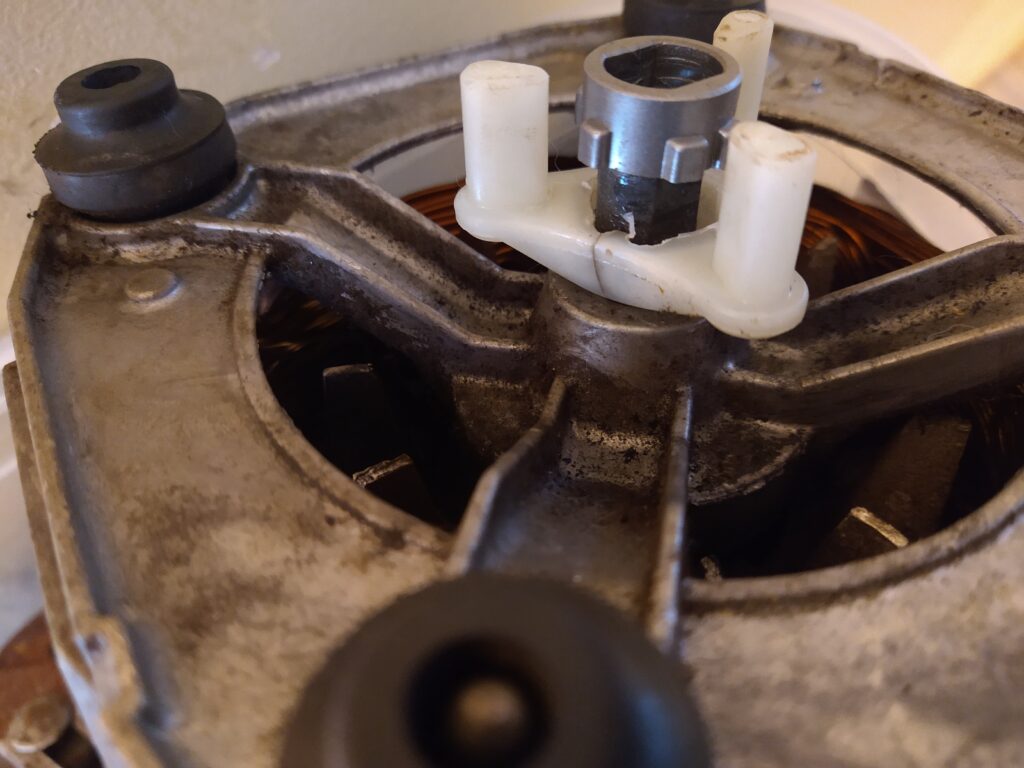
Fact:
The coupler is the three-pronged piece you see in the image above. It absorbs the torque when the motor is in motion and keeps the plastic drive forks safe from damage.
Sadly:
The rubber coupler will wear over time, as frequent use can shorten its lifespan. Now, a damaged coupler will place a load on the driving fork and cause a grinding sound.
Fortunately:
You can easily purchase a replacement coupler.
However:
Changing the coupler is a technical process. Do not rush when replacing this part, as you could end up damaging the replacement in the process.
Now:
Use a 12mm socket wrench when installing the replacement motor coupler. Try to be gentle when beating the part into place.
Thankfully:
Your Whirlpool washer should sound as good as new once you have replaced this part.
3. An Old Agitator
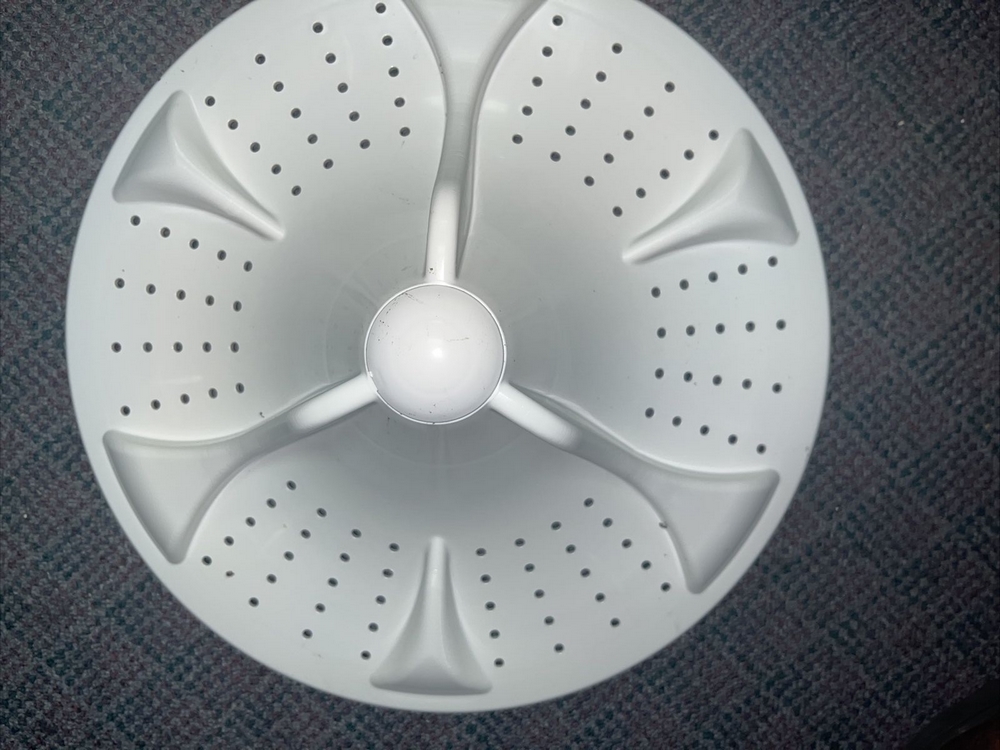
Note:
The agitator helps facilitate the washing process in your Whirlpool washer. It spins clockwise and counterclockwise, moving the clothes and the washing fluid.
Sadly:
An old or corroded agitator won’t move as freely. Reach into the tub and try moving the agitator. You should hear a hard click every time it rotates.
Now:
This complication means that the agitator needs to be changed.
Thankfully:
It isn’t a complex process. You’ll need the appropriate tools to remove the screw holding the agitator in place. You will also need to buy a replacement.
Here is how to change your old agitator:
- Step 1: Twist off the cap on your agitator to reveal the screw or nut underneath.
- Step 2: Using the appropriate screwdriver or wrench, carefully twist the nut out of place and safely stow it away.
- Step 3: Lift the agitator out of the tub. This process could vary in difficulty depending on how corroded the part is; use a pry bar if necessary.
- Step 4: Lower the new agitator into place and screw it in. Feel free to replace the screw if it is damaged.
- Step 5: Replace the safety cap.
Finally:
Rotate the new agitator and feel the difference. It should move freely, eliminating the grinding noise you have been hearing.
4. A Worn Tub Bearing
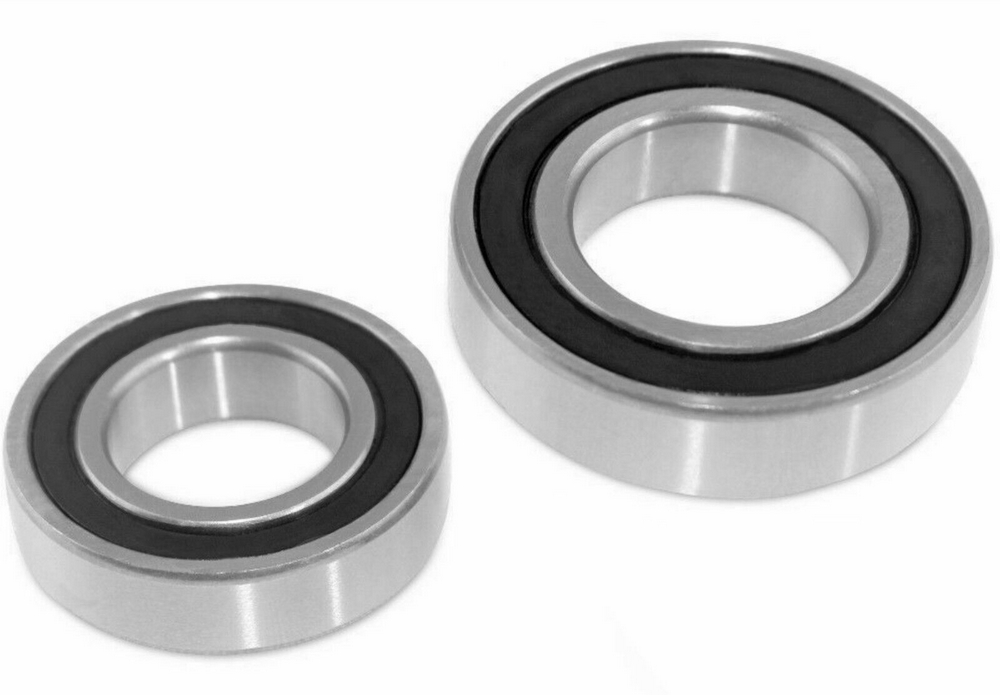
Conveniently:
The tub sits on these bearings, allowing for a wider range of motion. The bearings allow the tub to move without causing significant wear on sensitive parts.
Thankfully:
A protective seal usually keeps the tub bearings away from water or detergents. In this isolated state, they tend to last very long.
Sadly:
Using a surplus of harsh detergents can erode this protective seal and get to the tub bearing in a much shorter time frame.
Ultimately:
Harsh detergents and corrosive mixtures may wear away the bearing and destroy it, eliminating the part that facilitates easy tub rotation.
Now:
This damage could cause the machine to make an incessant grinding noise during a spin cycle or whenever the tub agitates.
Fortunately:
You can replace a faulty bearing by accessing the inner workings of the tub.
Here is how to open up a top-loaded Whirlpool washer:
- Step 1: Unplug your Whirlpool washer from the wall.
- Step 2: Secure the tub cover to the machine and grab a putty knife.
- Step 3: Slide the putty knife into the crevice between the top of the machine and the body. Feel around until you hit a block toward the left side of the machine.
- Step 4: This security tab keeps the top firmly fastened to the machine. Position the putty knife so you can undo the safety tab.
- Step 5: Do the same for the other side.
- Step 6: Lift the top and lean it against a wall. If you aren’t close to one, use a chord to secure it to the body after lifting it open.
- Step 7: Next, undo the screws that secure the front of the machine to the body and gently tip the cover forward.
- Step 8: This should reveal the inner working of the Whirlpool washer.
- Step 9: Carefully remove the safety springs holding the tub with the appropriate tool. Avoid performing this step with your bare hands.
- Step 10: Open the back access panel and undo the remaining safety springs.
- Step 11: From the back access, use a pair of pliers to squeeze and lift the clamp holding the pump hose. Disconnect the hose from the pump.
- Step 12: From the top, tilt the tub gently to the side and use your fingers to unfasten the clamp attaching the air dome tube to the tub.
That should take care of any parts connected to the tab. Note that the tub is quite heavy, and call for help if you need it for the remaining steps.
- Step 13: Carefully lift the tub from the top and tilt it back so you can pull it out of the forward opening.
- Step 14: Set it upside down, then remove the dust cap, E-ring, and spacer washer from the lower pulley.
- Step 15: Remove the pulley and cam assembly from the transmission shaft.
- Step 16: Disconnect the spring washer, flat washer, and bearing from the transmission shaft. Remember the order of these parts before setting them aside.
- Step 17: Undo the six half-inch head bolts that secure the damper base to the support.
These final steps are a bit technical and should be done properly to avoid damaging the rotor or the brake stator.
- Step 18: Remove three out of four of the ¾ inch screws that secure the rotor to the brake stator.
- Step 19: Temporarily replace them with 1 ½ inch screws.
- Step 20: Undo the last ¾ inch screw.
- Step 21: Unscrew the 1 ½ inch screws gently and slowly to release the 200-pound coil spring, pushing the rotor against the brake stator.
Now:
You should be able to slide off the brake rotor, brake stator, spring, cap for the spring, and damper assembly.
Next:
- Step 22: Remove the three half-inch bolts that secure the damper base to the tub bearing.
- Step 23: Remove the damper base, exposing the tub bearing.
Note:
Removing and replacing the bearing will not be an easy task. It may seem stuck at first but fear not. All you need are the right tools for the job.
Finally:
Securely fasten the new bearing and reassemble your Whirlpool washer. Hopefully, the grinding noise you normally hear should stop.
5. A Loose Drain Pan
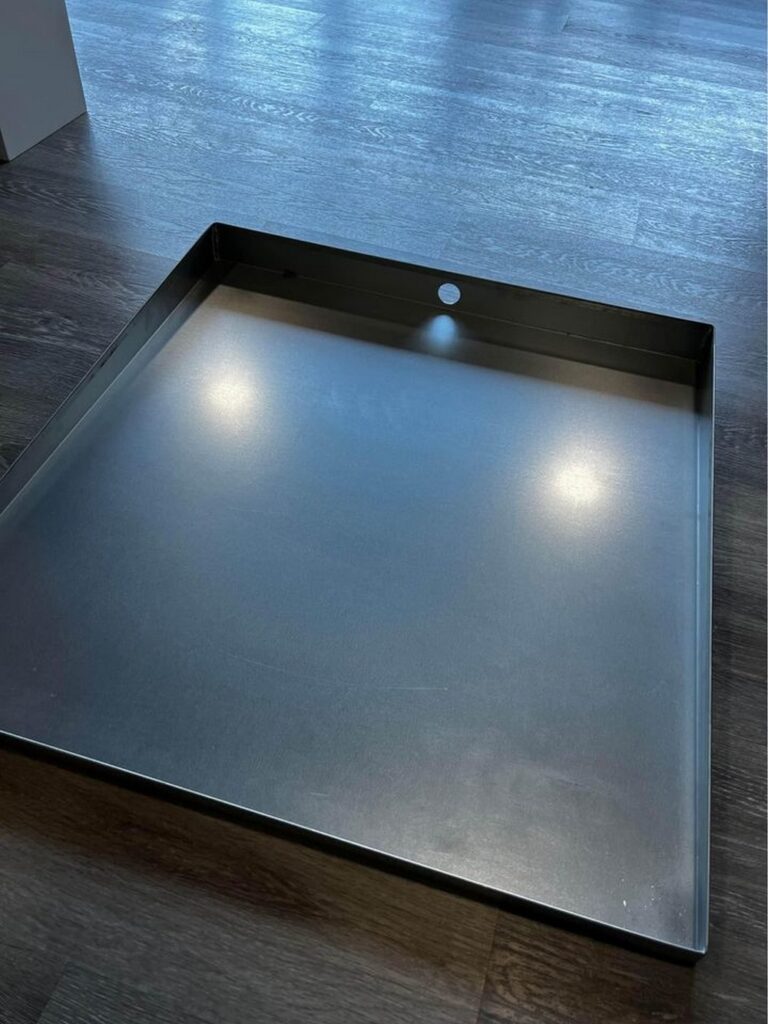
All Whirlpool washers are designed to safely siphon water out of the drain pipes and into a tub or similar connection.
However:
Some washers may develop a small leak. A drain pan keeps your bathroom floor nice and dry in such a case.
As such:
The drain pan is a good short-term solution when your Whirlpool washer leaks from the bottom.
Sadly:
Your machine vibrates during a spin cycle and could rub against the drain pan, causing the grinding noise.
It may occur when the washer is not sitting levelly on the ground.
Thankfully:
One can troubleshoot this issue by checking if the washer is moving from side to side. Try moving the washer around until you find a level placement.
Also:
You can balance the washer by propping it up with an appropriately sized item. However, running the washer at an angle could cause the internals to shift out of place over time.
Models Most Affected
Practically:
Washers work with high-speed movement.
As such:
Any of the Whirlpool washers could develop the problems that cause the grinding noise.
However:
One can narrow the list by focusing on the washers below. These models are usually associated with this problem.
1. Whirlpool Cabrio Washer
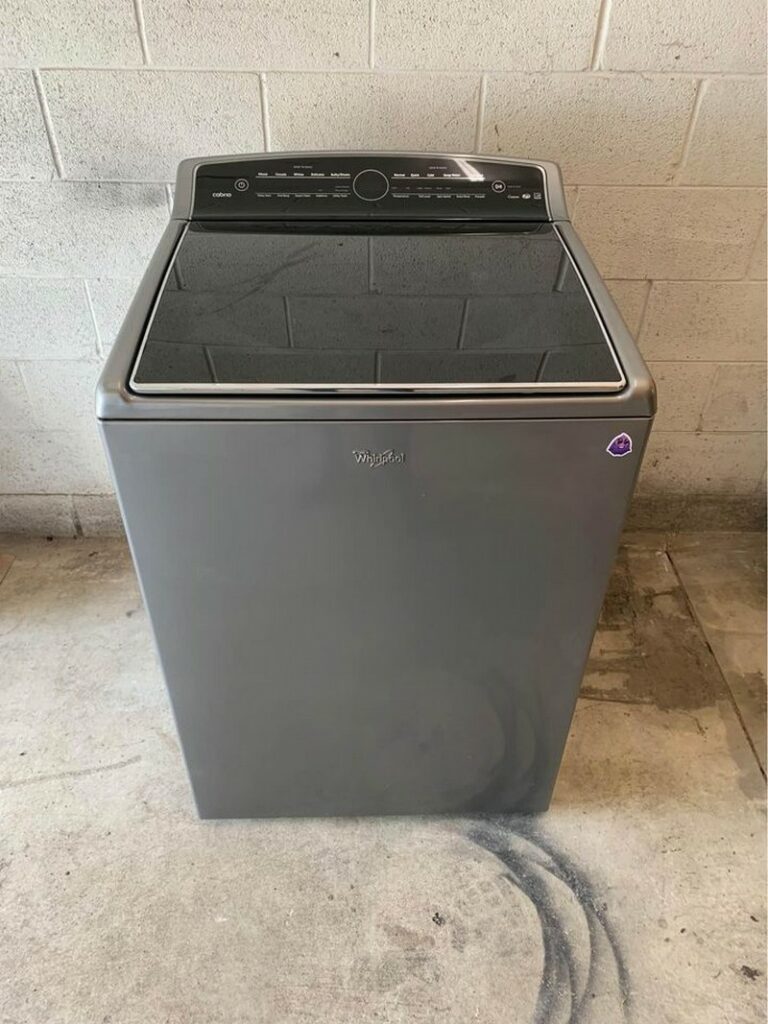
So:
The Cabrio is one of the newer Whirlpool washer models. It is top loaded and relies on the tub bearing for easy rotation.
As such:
The Cabrio could easily develop a grinding sound due to a worn tub bearing.
2. Whirlpool Front Load Washer
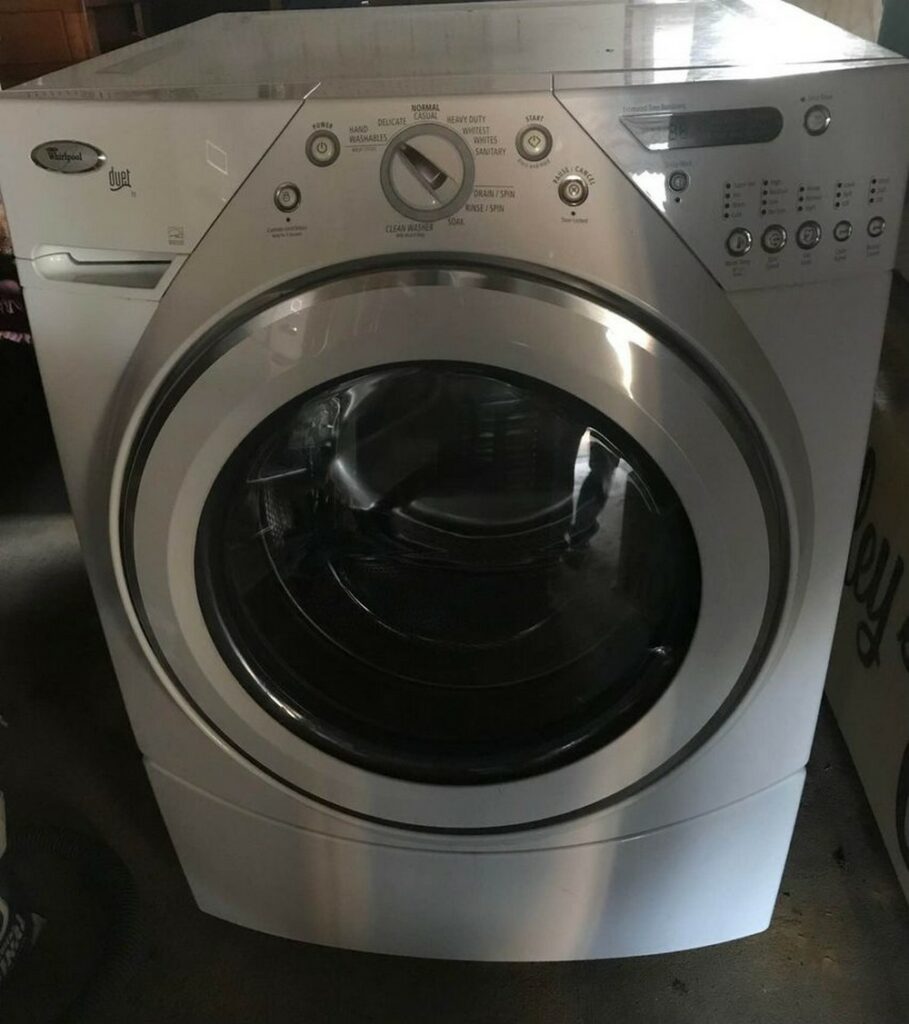
The Front Load models are very popular and easily susceptible to the leakage issue requiring a drain pan.
Subsequently:
The Front Load washers may suffer a grinding sound if not properly seated in the drain pan.
3. Whirlpool Top Loader Washer
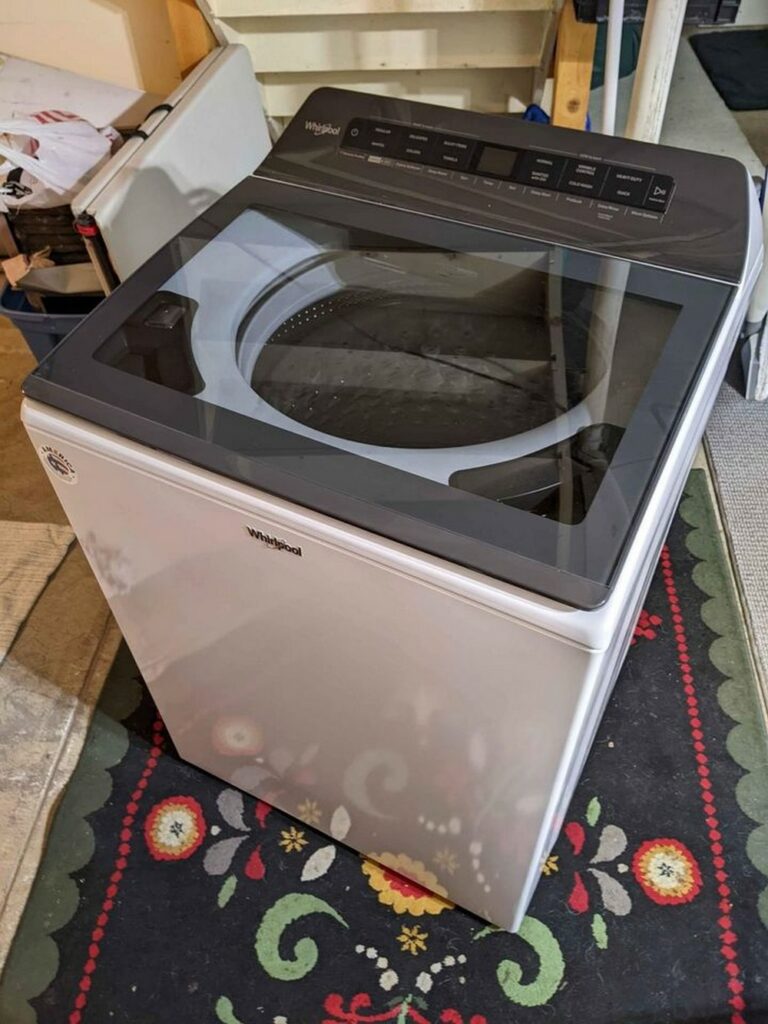
The Top Loader Whirlpool washer models occasionally come with flatter agitators. Consequently, this type of agitator can wear out very quickly.
Sadly:
A worn agitator may cause your washer to make an irritating grinding noise.
Other models commonly associated with this issue include the Whirlpool Estate, the Whirlpool duet, and the Whirlpool washer w11099680a.
Conclusion
Intuitively:
Your washer may not be as silent as you would like it to be, but there is a threshold.
Now:
You’ll need to inspect your washer to see if it makes an odd grinding noise during the spin cycle or a normal wash.
Thankfully:
We have helped streamline your search. Start from the problems below and work your way up.
- A damaged pulley
- A broken motor coupler
- An old agitator
- A worn tub bearing
- A loose drain pan
Sorting out these parts should remedy the grinding noise, allowing you to use your Whirlpool washer as intended.
In conclusion:
Did you find this guide helpful? Do you think we missed something, or do you have a suggestion?
Do not hesitate to leave a comment in the section below!
Frequently Asked Questions
Your Whirlpool washer may be making a grinding noise because the agitator is old and worn. Try turning it manually and listening for a distinct click.
You can remedy this noise by replacing the agitator.
Your washer may be sitting unevenly in a drain pan. If you use a drain pan, lightly push it against your washer and check if it wobbles.
You may need to move it to a level spot in the room if it does.
You may have overloaded your Whirlpool washer. Open the tub and check to ensure you haven’t put in too many clothes.
Lighten the load as much as possible and try the wash cycle again.
Agitator dogs help facilitate agitation in your GE. The grinding noise may signify that the agitator dogs in your GE are worn and slipping.
Replace them if so, and it should handle the problem.
The two most likely causes of this sound are a button, or small item stuck in the pump, or an item that managed to get through the tub seal.
Stop your machine and try to retrieve any small dislodged items.

